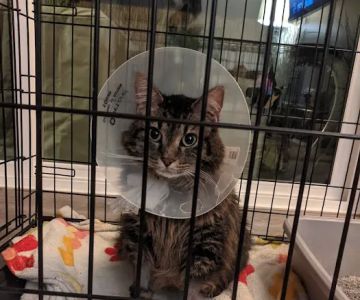Understanding Hip Dysplasia in Pets
As a pet owner, few things are more difficult than watching your beloved companion suffer from a painful condition. One such condition that affects many pets, especially dogs, is hip dysplasia. This malformation in the hip joint can cause significant discomfort and limit your pet’s mobility. Whether you have a dog already diagnosed with hip dysplasia or you’re considering adopting one, it’s important to understand how to care for pets with hip dysplasia effectively.
In this article, I’ll share insights on managing hip dysplasia in pets, along with practical care tips that can help improve their quality of life.
What is Hip Dysplasia?
Hip dysplasia is a genetic condition in which the hip joint does not develop properly, leading to joint instability. Over time, this instability can cause pain, inflammation, and wear-and-tear on the cartilage in the joint, often resulting in arthritis. While the condition is most common in large dog breeds like German Shepherds, Golden Retrievers, and Labrador Retrievers, it can affect any breed, including cats.
Symptoms of Hip Dysplasia in Pets
If you suspect your pet has hip dysplasia, there are several symptoms to watch out for:
- Difficulty getting up or lying down
- Reluctance to jump or run
- Limping or favoring one leg
- Stiffness, especially after exercise or in the morning
- Loss of muscle mass in the hind legs
If you notice any of these signs, it's important to visit a veterinarian for a diagnosis and to discuss a treatment plan.
Managing Hip Dysplasia in Pets: Practical Care Tips
Managing hip dysplasia in pets involves a combination of medical treatment, lifestyle changes, and preventive care. Let me walk you through some essential strategies that have helped my own pets live more comfortably with this condition.
1. Veterinary Care and Diagnosis
First and foremost, a proper diagnosis from a veterinarian is essential. The vet will likely perform physical exams, take X-rays, and assess your pet’s symptoms. Based on the diagnosis, they can recommend a treatment plan tailored to your pet’s specific needs.
2. Weight Management
Excess weight places additional strain on your pet’s joints, especially the hips. Maintaining a healthy weight is one of the most effective ways to manage hip dysplasia. In my experience, a balanced diet combined with regular exercise helps keep my pets at a healthy weight, reducing pressure on their joints.
3. Joint Supplements and Medications
Joint supplements, such as glucosamine and chondroitin, can be beneficial in maintaining joint health and reducing inflammation. I’ve used these supplements for my dog with great success, and they can help slow the progression of arthritis. In more severe cases, your veterinarian might recommend anti-inflammatory medications or pain relief options to manage discomfort.
4. Regular, Low-Impact Exercise
While it might be tempting to allow your pet to rest excessively, moderate and low-impact exercise is essential to maintaining joint flexibility and muscle mass. Walking, swimming, and gentle play are excellent options. Personally, I’ve found swimming to be one of the best exercises for dogs with hip dysplasia, as it provides a full-body workout without putting stress on their joints.
5. Use of Mobility Aids
For pets with more advanced hip dysplasia, mobility aids can make a huge difference. Products like dog wheelchairs, slings for support, and ramps for getting in and out of the car or up stairs can help your pet maintain independence. I’ve also seen many pets benefit from orthopedic pet beds that provide extra cushioning to reduce joint strain during rest.
Preventive Measures: Reducing the Risk of Hip Dysplasia
While hip dysplasia is a genetic condition, there are several preventive measures you can take to reduce the risk, particularly in young, developing pets.
1. Choose the Right Breeds
If you’re adopting a puppy, research the breed’s genetic predisposition to hip dysplasia. Choosing a reputable breeder who tests for joint problems can lower the risk of genetic conditions like hip dysplasia.
2. Ensure Proper Nutrition and Exercise
Feeding your pet a high-quality, balanced diet and providing proper exercise can support their bone and joint health from a young age. Avoid overexercising puppies or allowing them to gain excessive weight as they grow.
3. Regular Vet Checkups
Even if your pet doesn’t show signs of hip dysplasia, regular checkups with the vet can catch early signs of joint problems. Early intervention can slow the progression of the condition and keep your pet comfortable.
My Personal Experience and Success with Hip Dysplasia Management
I have a German Shepherd who was diagnosed with hip dysplasia at a young age. At first, I was devastated, but after working closely with our vet, we developed a comprehensive treatment plan that has greatly improved his quality of life. Through weight management, joint supplements, regular low-impact exercise, and the occasional use of pain relief medication, my dog has been able to remain active and happy for years. The key has been consistent care and monitoring, adjusting as needed based on his condition.
Hip dysplasia doesn’t have to mean a decrease in your pet’s quality of life. With the right care and management plan, your pet can live a full and active life despite this condition. If you're ever unsure about how to best care for your pet, don’t hesitate to reach out to your veterinarian for guidance. Their advice, combined with your love and attention, can make all the difference in helping your pet live comfortably for years to come.











